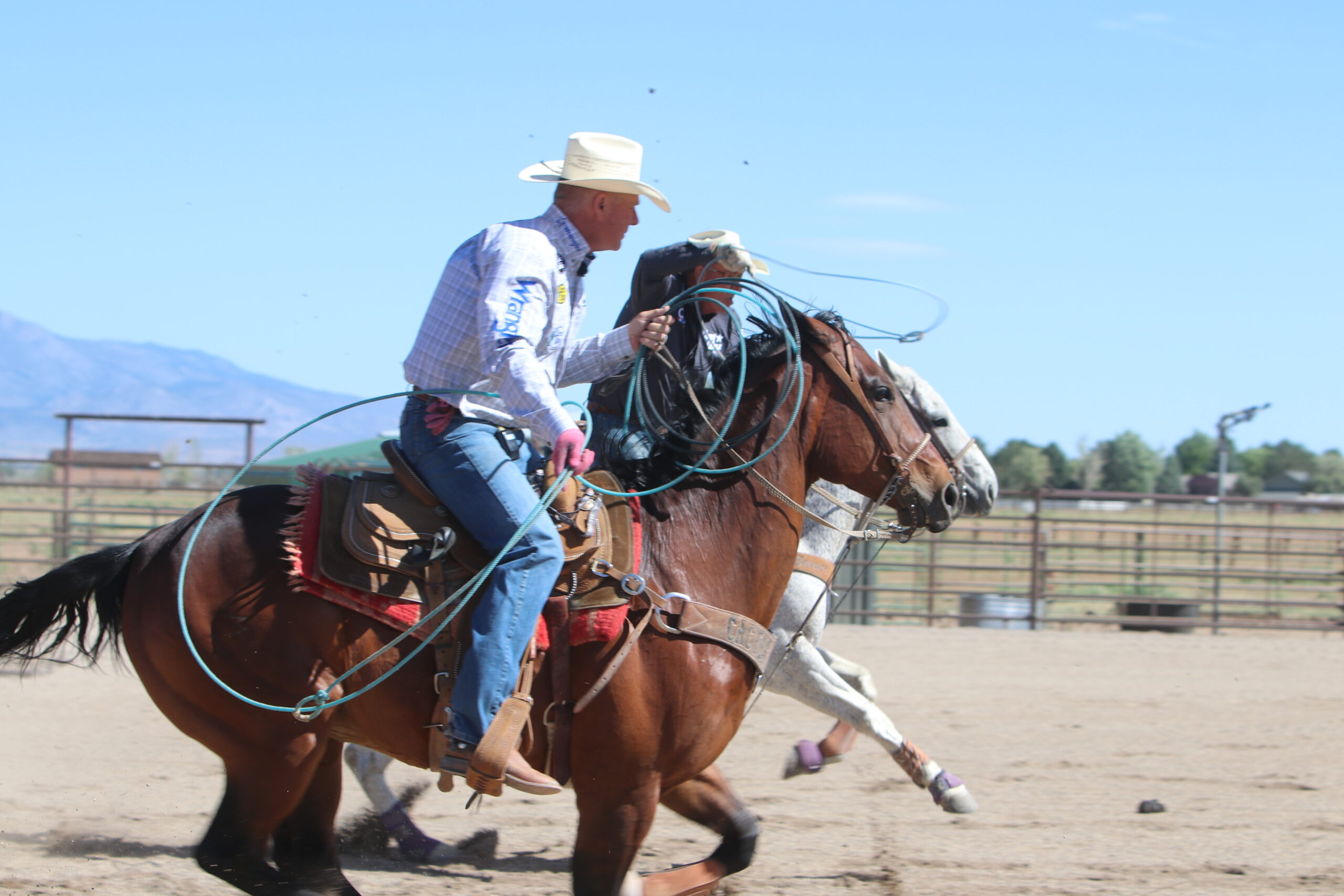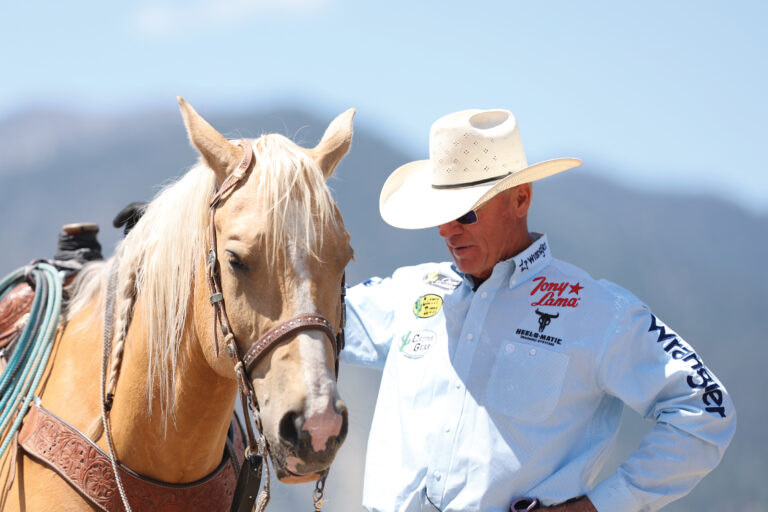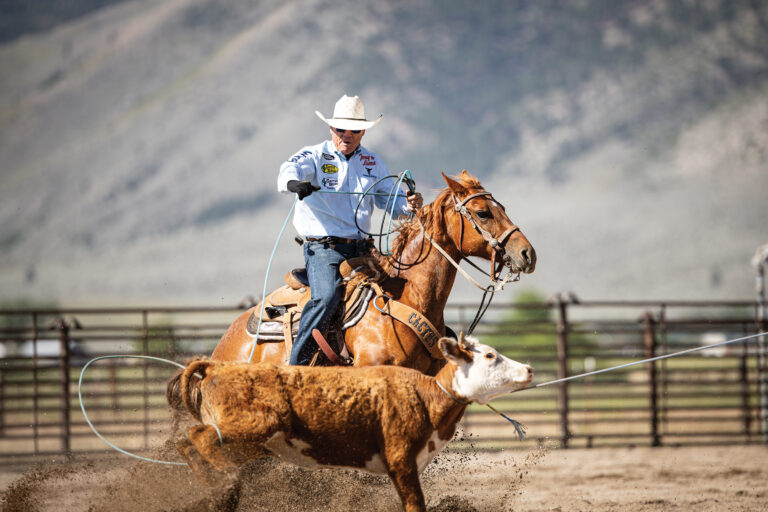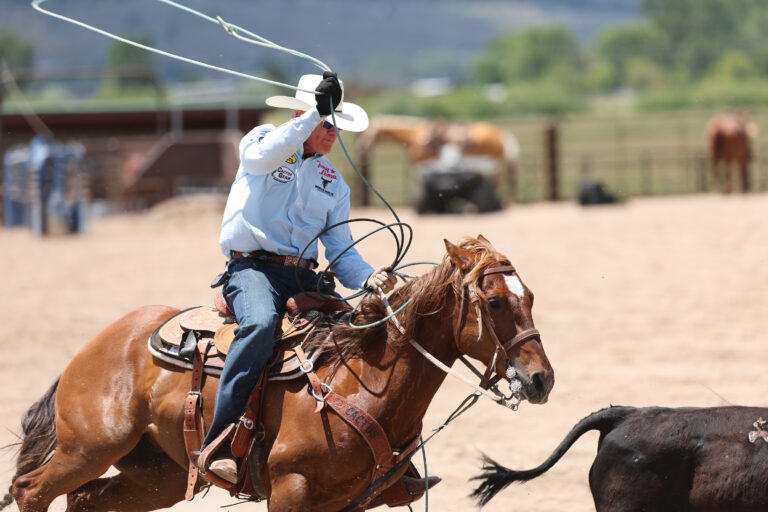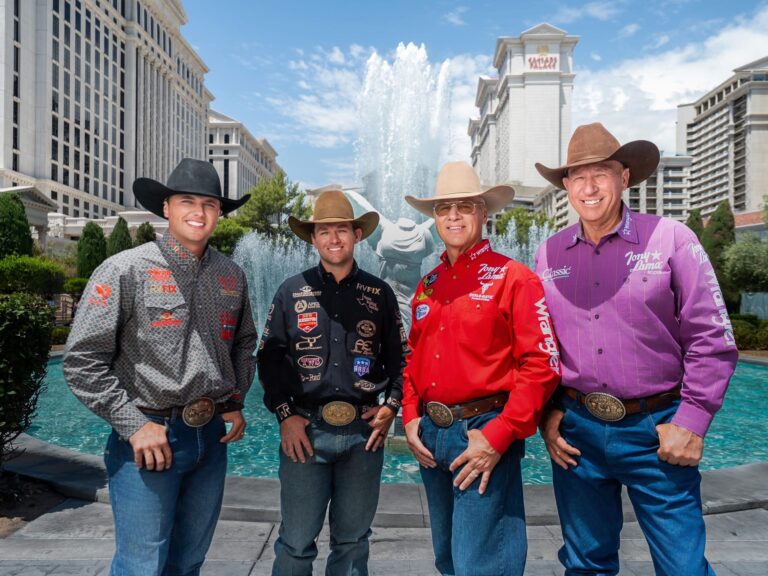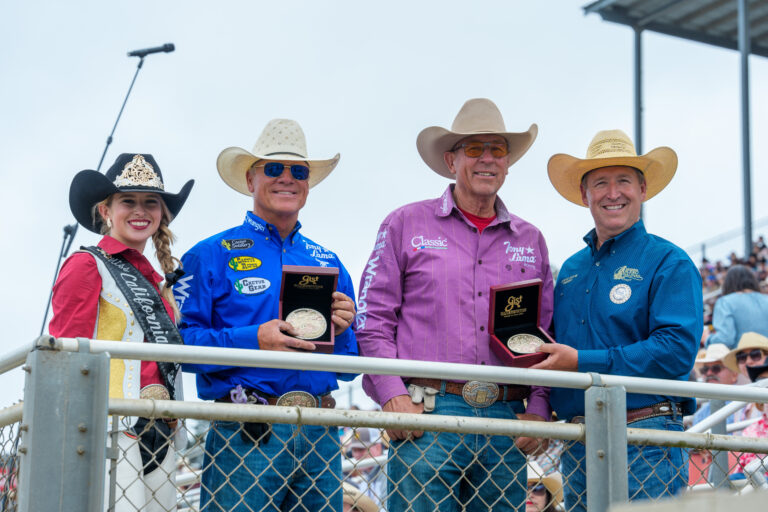When I started roping, I didn’t know anything about how to ride my horse. I just kind of turned him loose, let him turn in, kept hustling him until I could see my shot, then took my shot. My horse was kind of automatic. As I started getting a little better at my skills, I was trying to set up more of a precise shot position-wise. That’s when I started to realize that the better I could control my horse, the more precise I could be at setting up my positioning and my shot.
There was a time when I really thought I wanted a horse that was totally controllable, and that I was going to stay in total control of what I was doing. That worked pretty good when I was primarily jackpot roping to make a living. The name of the game was catching two feet, and I didn’t have to do it all that fast. So I could get away with just totally controlling my horse.
READ MORE: Clay O’Brien Cooper: Angle of Your Heel Loop Swing
As I started to progress and rodeo, things started happening faster. My headers started reaching, so I needed to start going back the other way and relying on some of my horse’s instincts—the ability to see things for himself and make some of the moves on his own. I needed to let him react in order to help me. When things are happening fast, he can see it and react so much quicker than I can.
My philosophy is to use as much of my horse’s instincts as I possibly can until the ratio of his reaction starts to get in my way. The relationship I want with my horse now is to be about 60 percent based on his reaction, then about 40 percent of him paying attention to me and what I’m asking him to do. If you reverse that and it’s 60 percent based on me, then I have to micromanage every part of it, and if I make a mistake then I’m late.
There’s a time when you need to get control when a horse is overdoing things. But it’s easy to jump back too far, control one too much and end up in the ditch on the other side of the road. When I get there, I have to go back to letting him use his instincts more, so I’m not having to micromanage the whole process.
It’s easier to ride an older, patterned horse, because a horse like that is more likely to make the right move. It’s harder to mess up an older horse and get in his way. He knows when to turn in and slide to a stop, and that makes it so much easier on the roper.
READ MORE: Clay O’Brien Cooper’s Heeling Horsemanship Advice
A heeler needs a horse to turn in at the right time, square up and stop. That’s the basics, and if you don’t have that foundation with the horse you’re riding you don’t have the basic fundamental ingredients that you need to be successful.




